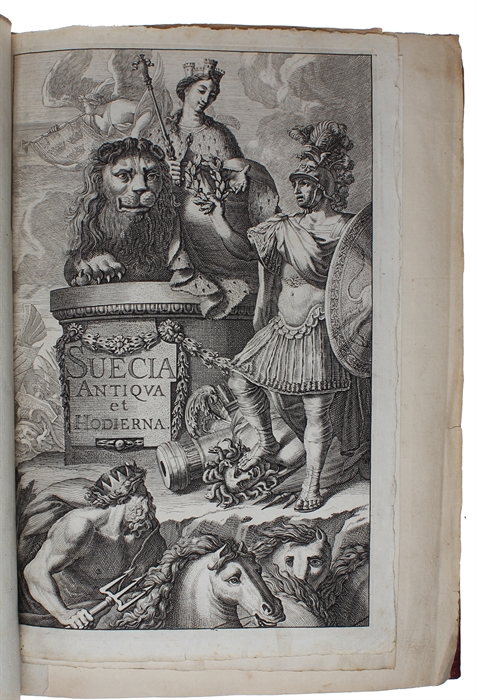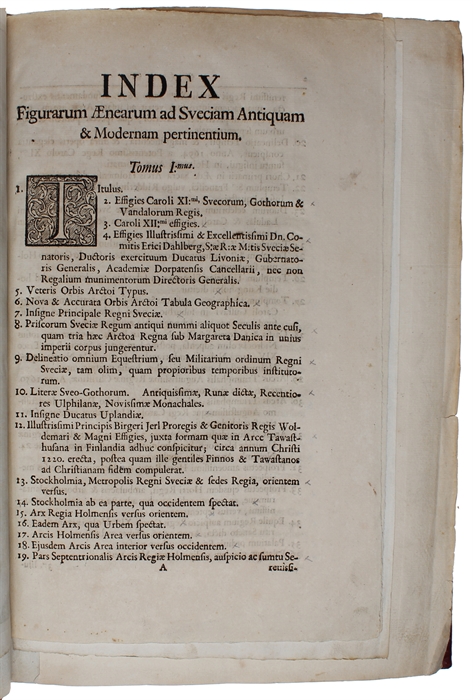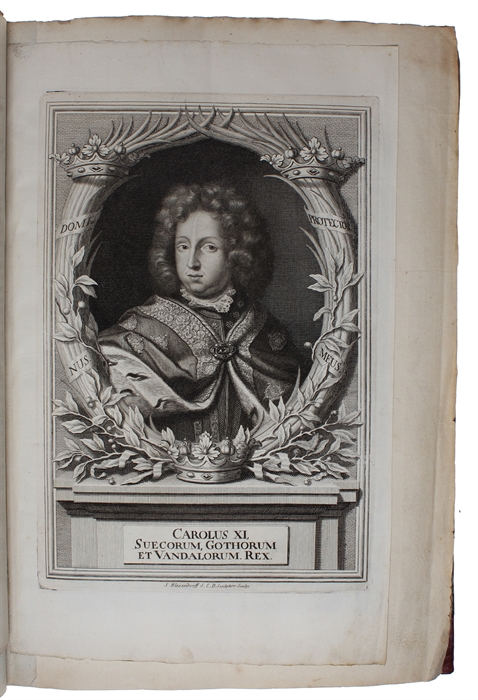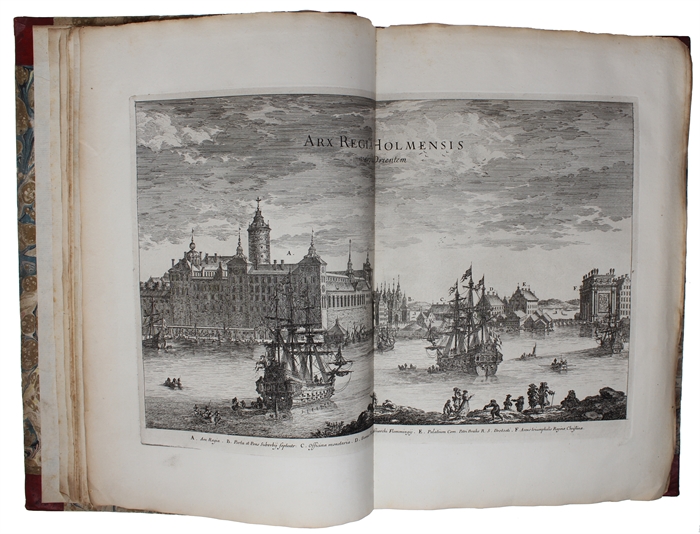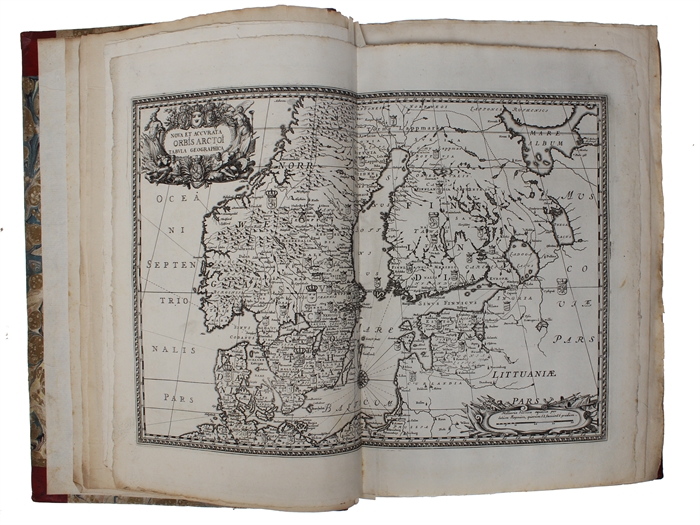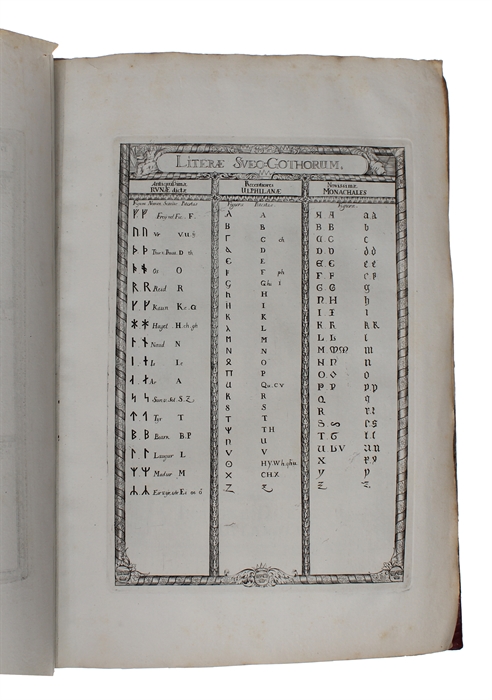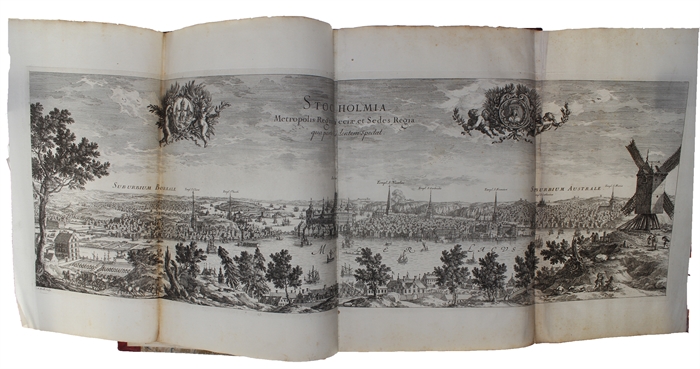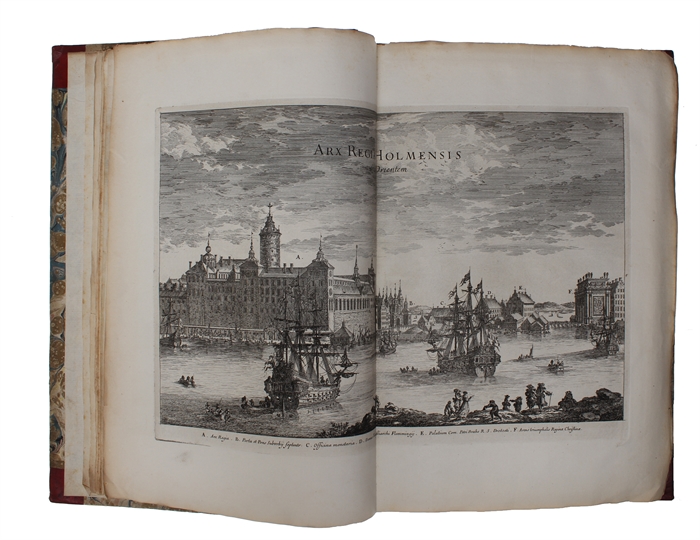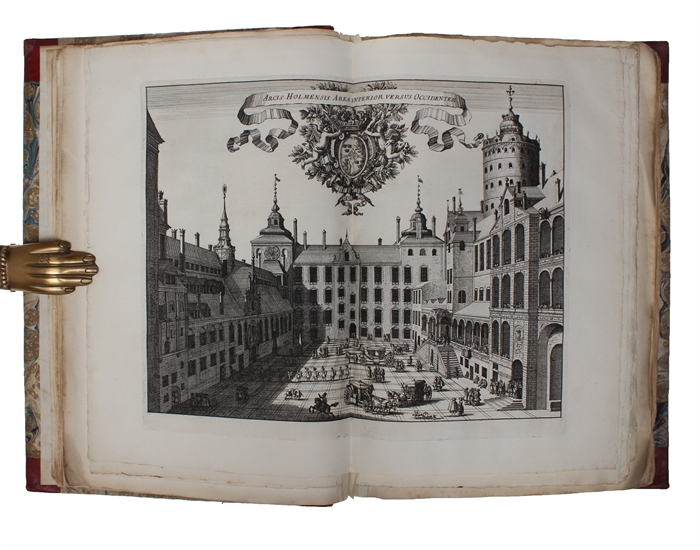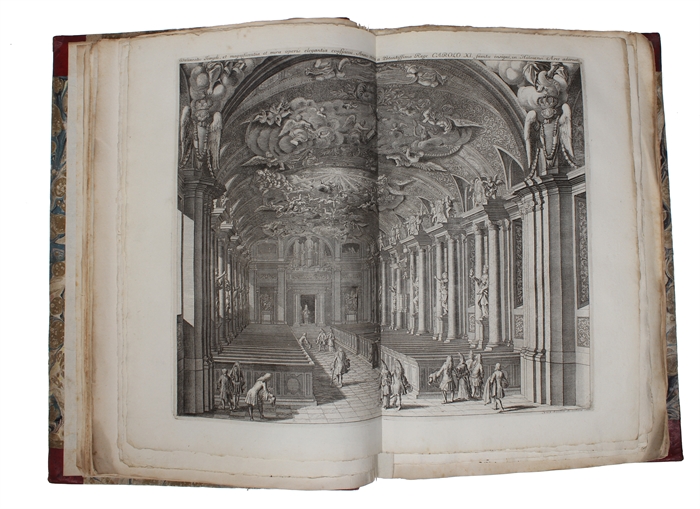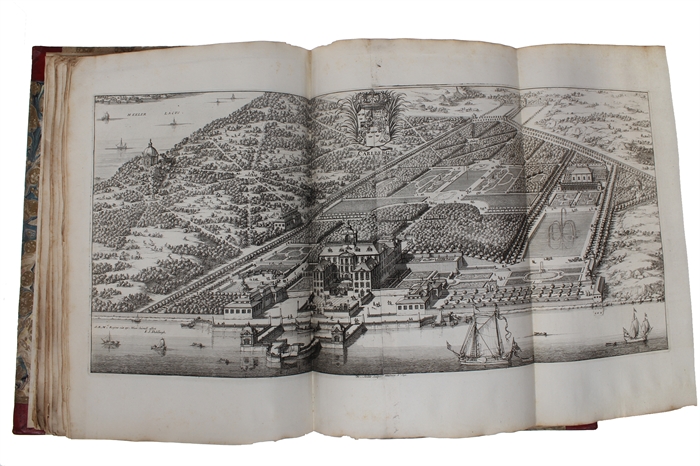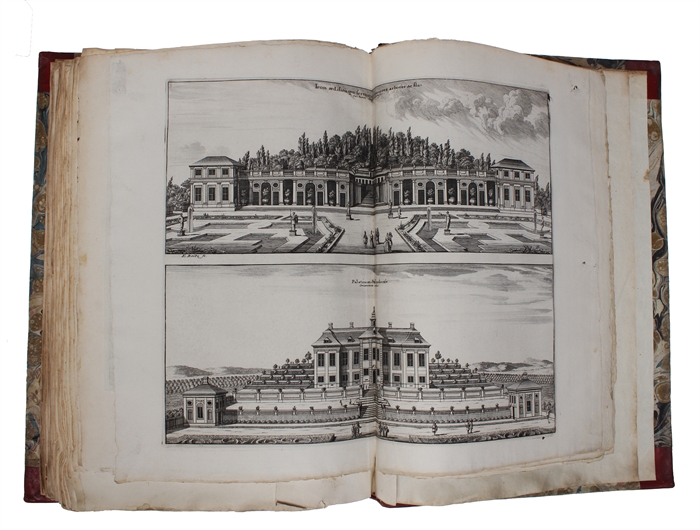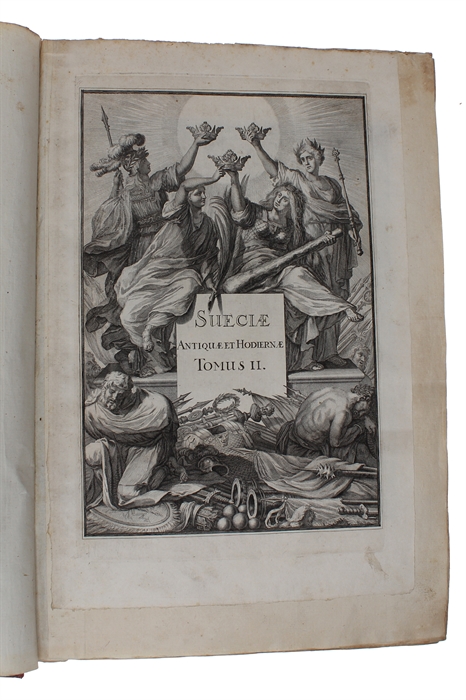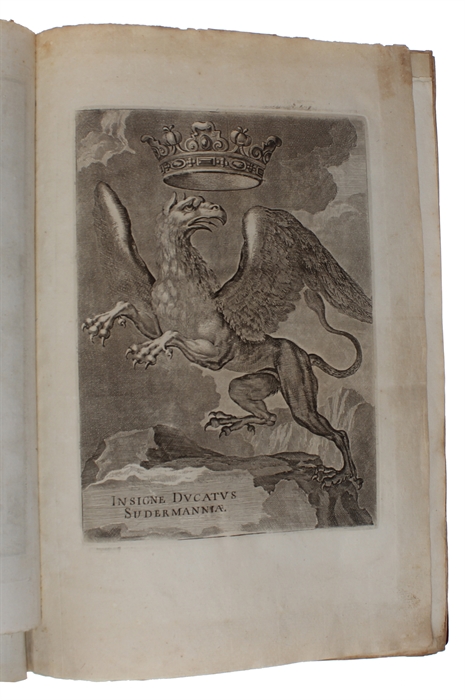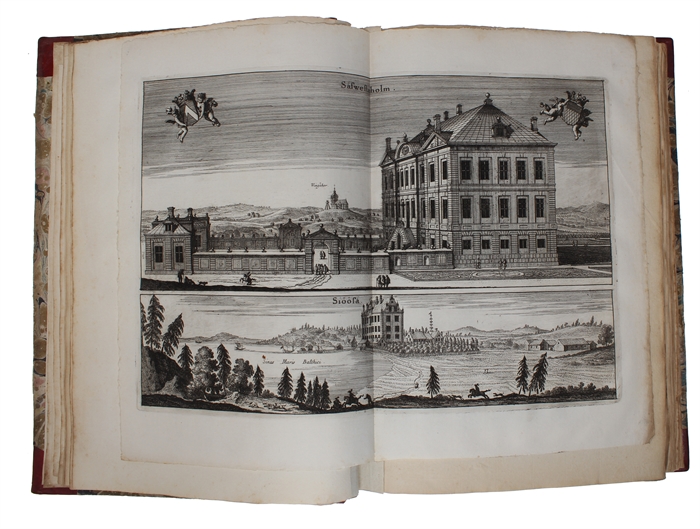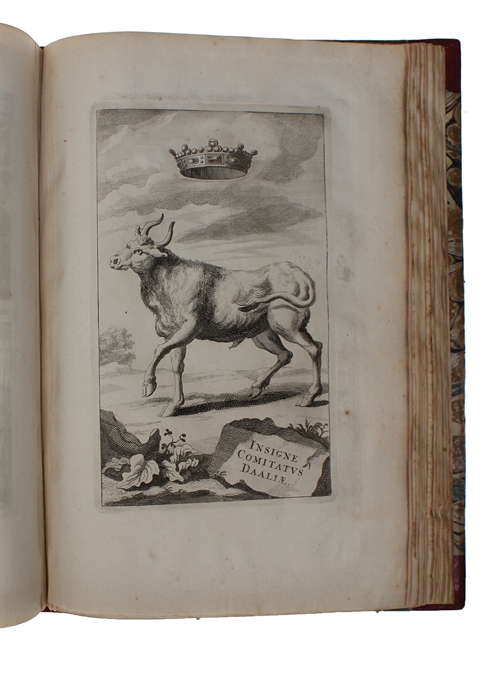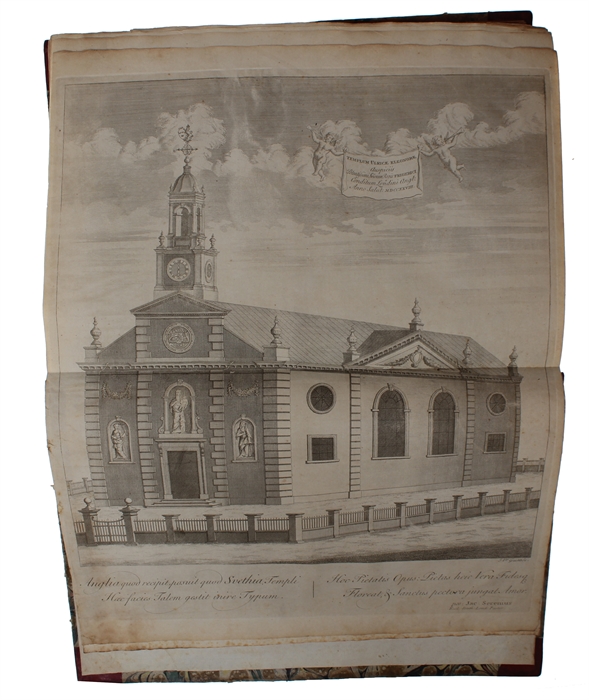THE LARGEST AND MOST SUMPTUOUS SCANDINAVIAN TOPOGRAPHICAL WORK
DAHLBERG (DAHLBERGH), ERIK.
Suecia Antiqua et Hodierna. 3 parts (all).
(Stockholm, publication date is unclear, but commission to the work was granted in 1661. ca. 1661 - 1715)
Folio (370 x 260 mm). 3 parts bound entirely uncut in 2 nice uniform red half calf bindings from ca. 1800 with gilt lettering and ornamentation to spines. Wear to edges of boards and small repair to lower compartment on vol II/III. 5 plates with marginal repairs and 1 plate with small closed hole (Not renewed margins as is often an indication of a later issue). Very light occasional marginal browning. An overall very nice uncut set in vertical folios as intended by Dahlberg.
13, (1) pp. of Index. 356 etched and engraved plates - the list of plates at the beginning calls for 352, but numbers "46" in vol. II and "38" in vol. III each consist of two separate plates plus 1 extra plate (consisting of two plates) in the end of vol. III showing Templum Ulricæ, the Swedish church in London. Thus complete (+1 extra). Plates by various engravers including J. van den Aveele, Willem Swidde, Jean Marot, Jean Le Pautre, A. Perelle, J. J. von Sandrart, and E. Reitz, most after Count Dahlberg's drawings.
Magnificent copy, entirely uncut with the additional uncalled for plate, of the largest and perhaps most sumptuous Scandinavian topographical work. ‘Suecia antiqua’ was an ambitious effort to document Sweden. The kingdom was then at the height of an aggressive expansion and very much aware that it had become a major power, primarily through its success in the Thirty Years War (1618-48) and campaigns against Denmark and Poland in the 1650s. In the course of this transformation, it took substantial new territories and sponsored many new and impressive architectural projects both at the state and the individual level, which were here presented to an international audience. Dahlberg's direct source of inspiration was the topographical publications issued by the Swiss publisher Matthäus Merian whom he had become acquainted with during his military service and studies in Germany: ”I want to produce a work on Sweden like that with which Merian honored Germany. Foreiners should see how much of greatness and beauty is to be found in our fatherland”. (Jonsson, Stormaktstid, 1992). “The compilation of architectural views emerged as a genre in the mid-sixteenth century and grew in popularity over the following two hundred years. They range widely in scope, ambition and intended purpose, with some constituting a kind of architectural monograph and others taking a regional or global focus as a form of topographical literature. Many are documentary; others contain imaginary or ideal buildings. Some emphasize text; others contain only a few captions. However, all have in common an attractive presentation that is not particularly technical, and would appeal to anyone with even a passing interest in architecture. It may be this easy accessibility that has often made them seem like ornaments for aristocratic libraries and largely removed from the more intellectually engaged worlds of the study and the architectural studio. With some exceptions, such as the rich works of Giovanni Battista Piranesi, they have typically been seen as early coffee table books - of limited use at the time, and important to the history of art and architecture primarily” (Kristoffer Neville, Suecia antiqua et hodierna: An Architectural Viewbook in the Eighteenth Century). Brunet V:578.
The scope and extravagant character of the work was reflected in it’s printing history; In 1661, Dahlberg obtained a commission from the Swedish government to compile a pictorial archive of the country's architectural treasures. No less than 18 engravers were hired to transfer Dahlberg’s drawings to copperplates (a few of the drawings were by David Klöcker-Ehrenstrahl and Elias Brenner). After decades of transferring drawings to copperplates, 21 years were spent on completing the printing of the plates - the sheets continued to be published throughout the 18th and into the 19th century. Per Lagerlöf wrote a Latin text, but it was only partially printed and never published.
Lindberg: Swedish Books 1280–1967 as no. 37.
Collijn 4, 198.
Order-nr.: 60343


